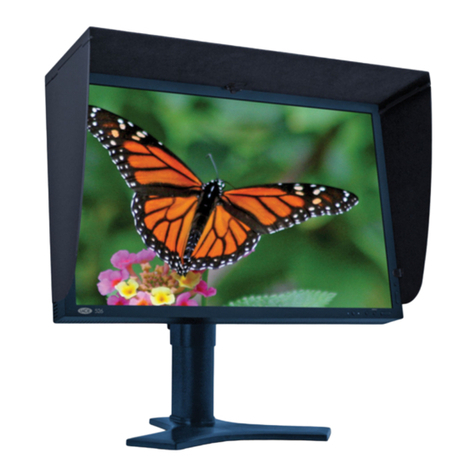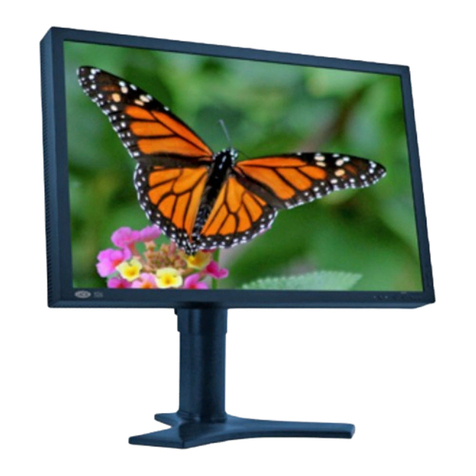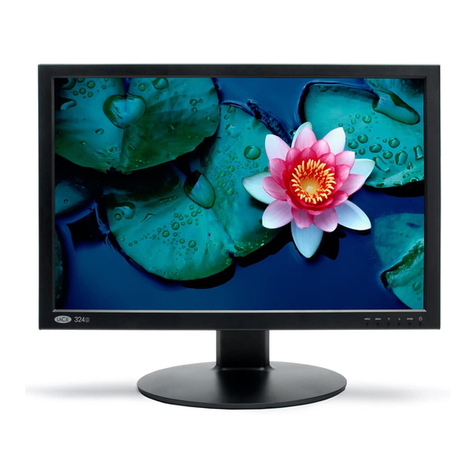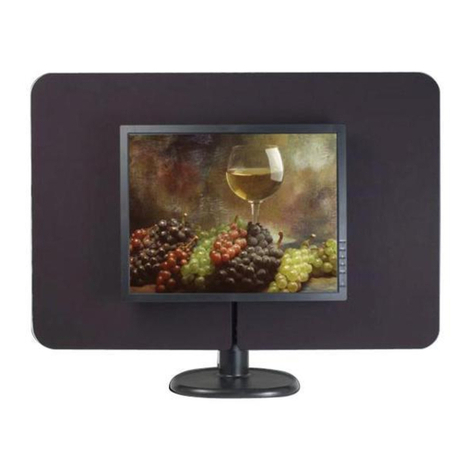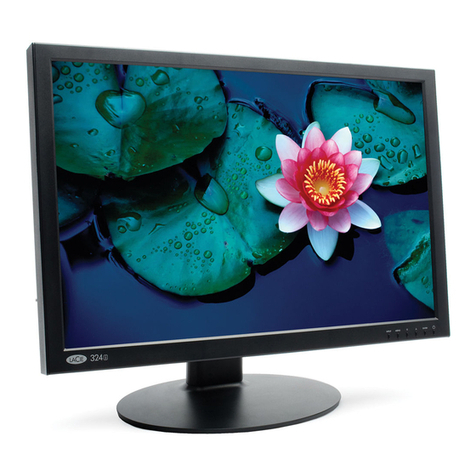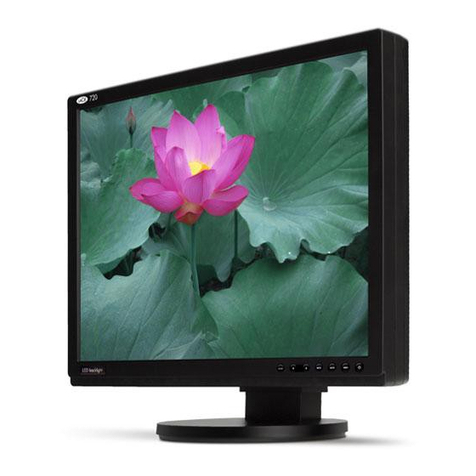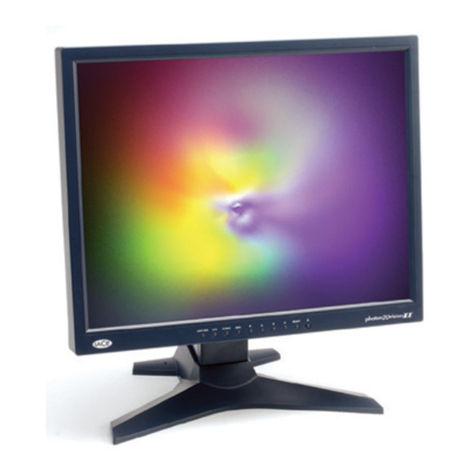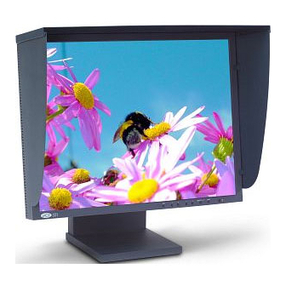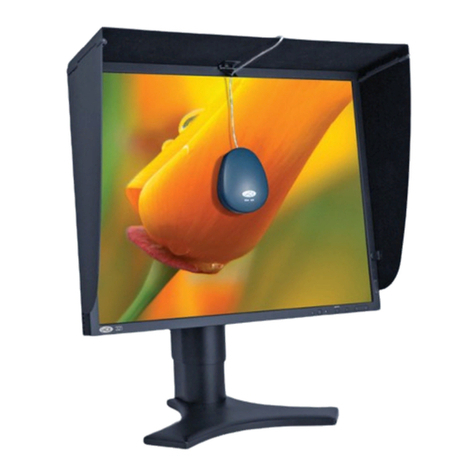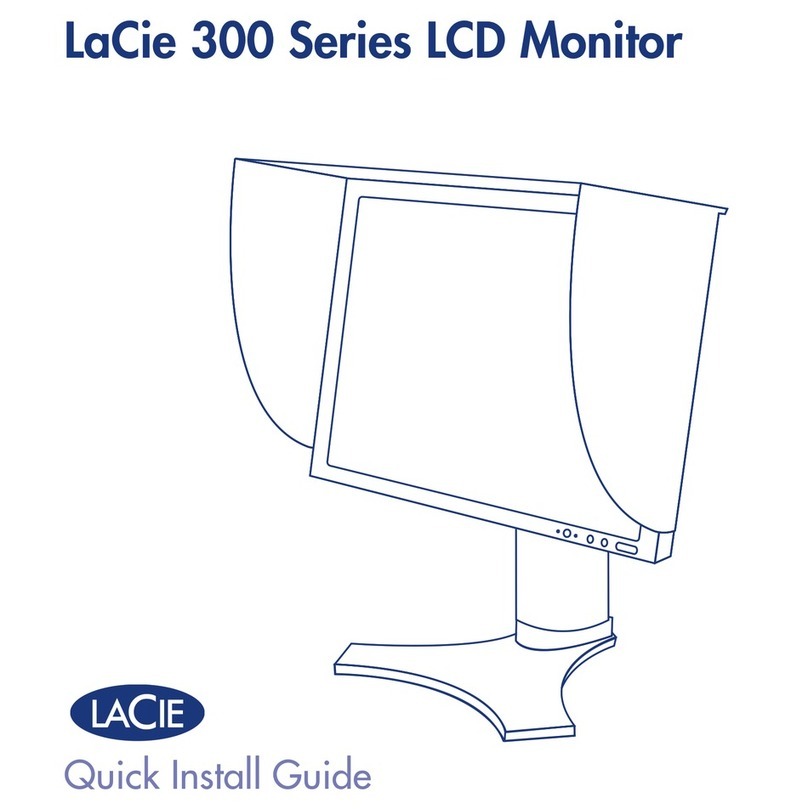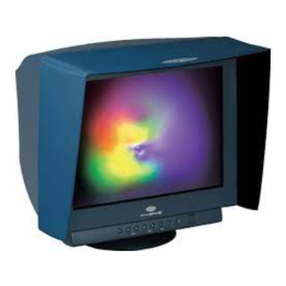
Scanner Monitor Proofer Press
Original Print result
1- While this White Paper focuses on monitors and printers, the same issue affects scanners. The range of colors that are distinguishable by a scanner also varies from one model to the next.
y
0.8
0
0.2
0.4
0.6
0.8
0.2 0.4 0.6 x
Monitor
sRGB
ISOcoated
1. HARDWARE/SOFTWARE FACTORS: HOW
RELIABLY CAN PERIPHERALS DISPLAY COLORS?
Basic color reproduction issues can easily be
identified in common computer environments by
comparing the way a given RGB value appears. For
instance, when blue (R:0, G:0, B:255) is displayed
on several computer monitors, the result is often as
many shades of blue as there are available monitors.
There are several reasons for this:
MONITOR TECHNOLOGY DIFFERENCES
While flat panel displays are based on liquid crystal
panels that use color filters to produce color, tube
monitors (also called CRTs) use phosphors instead.
Even among flat panel displays, the differences in
liquid crystal technology types such as IPS, VA and
TN families can cause differences in the way the
same RGB value is displayed.
MONITOR SETTINGS
Luminance, brightness, contrast, and color
temperature differ from one product to another
depending on their usage. The end-user can also
change the factory settings to adjust monitor behavior
to their personal preferences. Both factory and user
settings have a direct influence on monitor colors.
MONITOR AGING
The performance of a monitor varies with its age.
As time goes by, for example, the maximum intensity
of the backlights in a flat panel display can diminish,
thus changing the way that the most saturated colors
appear. Therefore, contrary to common belief, RGB
color representation is not absolute, but essentially
device-dependent.
While graphic artists need to display their work on
monitors when processing documents, they also
need to print or prepare them for printing.
Unfortunately, monitors and printers differ in the
way they produce color.
• Monitors are additive devices that represent colors
by adding red, green, and blue values.
• Printers, on the other hand, are subtractive devices
that rely on reflected light to render colors. Color is
produced by the progressive subtraction of light by
successively applying cyan, magenta, yellow, and
black inks on paper.
The difference in these two processes and
representations of color creates a requirement for a
translation mechanism from the first to the second.
This translation is generally managed, among
others, by software called CMM that is embedded in
the graphic application’s software, operating system
and/or hardware drivers used. Since the CMM is
most often proprietary, the way colors are translated
ultimately depends on which software, OS, and
hardware are used.
In addition to these concerns, a fundamental issue
affecting all color reproduction processes is the
difference in the range of colors that each device
can produce, also called gamut. While it is beyond
the scope of this document to describe mathematical
color representations, a common graphical
In the digital imaging workflow, a document is commonly processed by a series of computer peripherals.
Because these peripherals all differ from one another in the way they display, process, and reproduce
color, discrepancies can appear between the original and the reproduced colors. The issue of reliable
color reproduction is further impacted by human factors. The aim of this document is to explore some of
the key reasons why color reproduction discrepancies appear and to outline some ways through which
they can be minimized.
